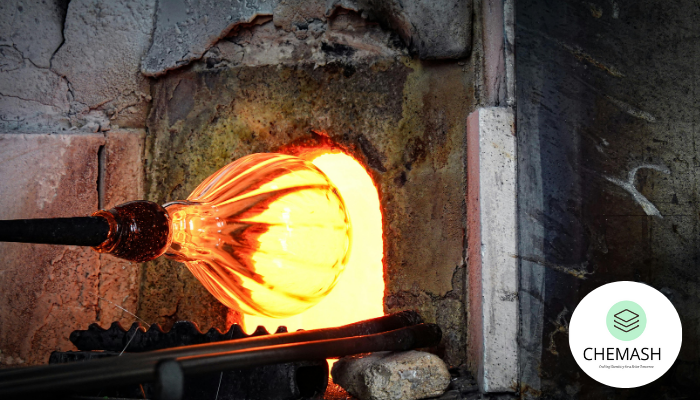Glass Manufacturing Process
Glass is an amorphous, non-crystalline solid used in countless applications such as windows, bottles, and optical devices. Manufacturers create it by melting a mixture of raw materials at high temperatures. Afterward, they rapidly cool the molten mixture to form a transparent and durable solid.Glass Manufacturing Process

1. Raw Materials
Glass production begins with carefully selected raw materials. The most important ingredients include:
- Silica (SiO₂): Sand provides the primary glass-forming component.
- Soda ash (Na₂CO₃): This material lowers the melting point of silica and reduces energy use.
- Limestone (CaCO₃): It improves chemical stability and enhances durability.
- Other additives: Alumina, magnesium oxide, and coloring agents adjust strength and appearance.
2. Batch Preparation
In the next step, manufacturers weigh and mix the raw materials. This careful blending ensures a consistent batch for melting. Moreover, precision at this stage directly affects the quality of the final glass.
3. Melting
Once prepared, the batch enters a furnace heated to around 1500°C to 1600°C. At this temperature, the ingredients react and form molten glass. During this process, carbonates decompose and release carbon dioxide (CO₂).
4. Refining
Manufacturers then maintain the molten glass at a high temperature. This refining stage allows bubbles and impurities to escape. As a result, the glass becomes clearer and more uniform.
5. Forming and Shaping
At this point, the glass is ready for shaping. Different techniques create various products, for example:
- Blowing: Ideal for bottles and containers.
- Pressing: Common in tableware and lenses.
- Drawing: Used for producing fibers and flat glass sheets.
- Rolling: Applied to patterned or reinforced glass.
6. Annealing
Next, manufacturers slowly cool the shaped glass in an annealing lehr. This controlled cooling relieves internal stresses. Consequently, the product gains better strength and reduced risk of cracking.
7. Inspection and Finishing
Finally, workers inspect the glass for defects such as cracks, bubbles, or irregularities. Depending on the application, they may cut, polish, temper, or coat the product. These finishing touches ensure high performance and visual appeal.
Conclusion
In conclusion, glass manufacturing involves a sequence of precise steps. From raw material selection to annealing and finishing, each stage contributes to the durability and clarity of the final product. Thanks to these processes, glass remains one of the most versatile materials in modern life.
